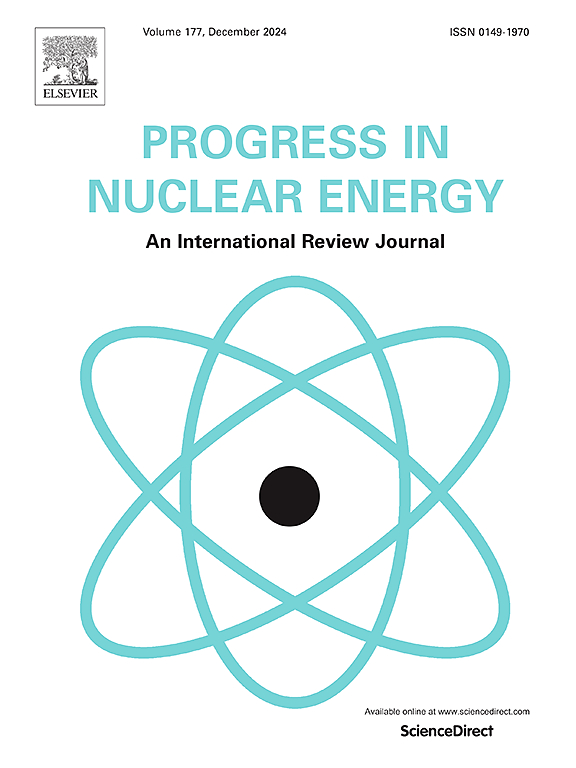Experimental and numerical study of single bubble migration behavior in stagnant molten LBE
IF 3.3
3区 工程技术
Q1 NUCLEAR SCIENCE & TECHNOLOGY
引用次数: 0
Abstract
Lead-cooled Fast Reactor (LFR) is generally designed with a pool-typed configuration, where the steam generator heat transfer tube of the secondary loop is in direct contact with high temperature liquid Lead-Bismuth Eutectic (LBE) of the primary loop. Due to the significant temperature and pressure differences between the tube's inner and outer sides, it can lead to a Steam Generator Tube Rupture (SGTR) accident. The migration of steam bubbles in the primary coolant generated by the interaction between LBE and water is a main phenomenon in the fourth stage of SGTR accident. Focusing on this aspect, in current paper experimental and numerical studies are performed on the rising characteristics of bubbles in liquids such as water, ethanol, FC-40, glycerol and molten LBE. In order to qualitatively analyze the bubble motion characteristics during experiments, a high-speed camera is utilized to capture the bubble rising process, and the bubble's position, size, shape and other parameters are obtained. Bubble motion parameters are further extracted from the captured pictures using a self-developed MATLAB image processing code. By investigating the behavior of bubbles as they rise in transparent liquids, the validity of a bubble shape region map and a previous empirical correlation for the estimation of bubble terminal velocity are confirmed. Experimental data for the rising shape and terminal velocity of bubbles in molten LBE are in respectable agreement with the map and empirical correlation. The simulation results of bubble rising behavior in LBE are compared with experiments, which show good consistency in bubble shape and terminal velocity. The experiment and simulation of bubble rising behavior in molten LBE obtained in this study can enhance the understanding of SGTR accident and contribute to future structural design optimization of LFR system.
求助全文
约1分钟内获得全文
求助全文
来源期刊

Progress in Nuclear Energy
工程技术-核科学技术
CiteScore
5.30
自引率
14.80%
发文量
331
审稿时长
3.5 months
期刊介绍:
Progress in Nuclear Energy is an international review journal covering all aspects of nuclear science and engineering. In keeping with the maturity of nuclear power, articles on safety, siting and environmental problems are encouraged, as are those associated with economics and fuel management. However, basic physics and engineering will remain an important aspect of the editorial policy. Articles published are either of a review nature or present new material in more depth. They are aimed at researchers and technically-oriented managers working in the nuclear energy field.
Please note the following:
1) PNE seeks high quality research papers which are medium to long in length. Short research papers should be submitted to the journal Annals in Nuclear Energy.
2) PNE reserves the right to reject papers which are based solely on routine application of computer codes used to produce reactor designs or explain existing reactor phenomena. Such papers, although worthy, are best left as laboratory reports whereas Progress in Nuclear Energy seeks papers of originality, which are archival in nature, in the fields of mathematical and experimental nuclear technology, including fission, fusion (blanket physics, radiation damage), safety, materials aspects, economics, etc.
3) Review papers, which may occasionally be invited, are particularly sought by the journal in these fields.
 求助内容:
求助内容: 应助结果提醒方式:
应助结果提醒方式:


